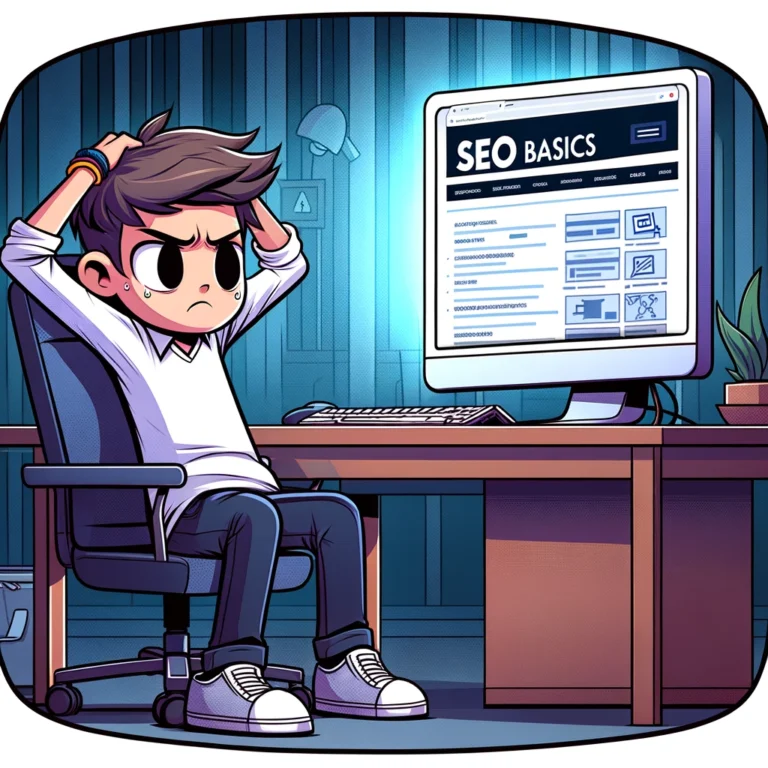In the ever-evolving landscape of digital marketing, the convergence of user experience (UX) and search engine optimization (SEO) has become a pivotal focus for businesses seeking to enhance their online presence. This article delves into the intricate relationship between UX and SEO, offering actionable insights for improving both elements to achieve better search rankings and user satisfaction.
Understanding User Experience
User experience encompasses all aspects of a user’s interaction with a company, its services, and its products. Good UX is about creating a seamless, engaging, and easy-to-navigate website that meets the needs of your visitors. It involves everything from the website design, content, usability, to the overall feel of the site.
Why UX Matters in SEO
Search engines like Google have increasingly emphasized the importance of user experience in their algorithms. The rationale is straightforward: search engines want to promote content that provides significant value to users, which is often reflected in how users interact with the website. A positive user experience leads to longer dwell times, lower bounce rates, and more meaningful interactions, all of which are indicators to search engines that a website is of high quality.
Key Components of UX That Impact SEO
1. Website Design and Accessibility
A well-designed website helps users find what they need quickly and effortlessly. This includes a responsive design that adjusts to different devices and screen sizes, making your site accessible to all users, including those with disabilities. Accessibility improvements can significantly impact your SEO as search engines prefer websites that cater to a broad audience.
2. Site Speed
One of the most critical aspects of UX that affects SEO is site speed. Websites that load quickly provide a better user experience. Search engines recognize this and tend to rank faster websites higher. Improving your website’s speed can be as simple as optimizing images, minifying code, and leveraging browser caching.
3. Content Quality
At the heart of UX is content. High-quality, relevant content answers users’ questions and encourages them to engage further with your website. This not only increases dwell time but also signals to search engines that your site provides valuable information. Ensure your content is well-structured, easy to read, and updated regularly to keep users coming back.
4. Navigation and Site Structure
A logical structure helps users and search engine crawlers easily navigate your site. A straightforward menu, a clear path to important pages, and a consistent layout reduce confusion and frustration, improving the overall user experience and aiding SEO efforts.
5. Mobile Optimization
With the majority of internet traffic coming from mobile devices, having a mobile-friendly website is essential. Mobile optimization involves designing your site to offer an optimal viewing experience across all mobile devices. This is crucial, as poor mobile experiences can lead users to leave your site quickly, negatively affecting your search engine rankings.
Implementing UX Best Practices for SEO
Start with User Research
Understanding your audience is the first step in optimizing both UX and SEO. Use tools like surveys, user testing, and analytics to gather insights into what your users need and expect from your website.
Focus on Technical SEO
Technical SEO, which includes optimizing your website’s structure, code, and other elements, is crucial for both search engines and users. Ensure that your site is crawlable and that all technical aspects are optimized to improve both UX and SEO.
Continuously Test and Optimize
UX is an ongoing process. Regularly testing different aspects of your website can provide valuable insights into how users interact with your site and what changes can improve their experience. Tools like A/B testing, heatmaps, and Google Analytics can offer critical data that will help you refine both UX and SEO.
The symbiotic relationship between user experience and SEO is undeniable. By focusing on providing a superior user experience, you not only satisfy your site visitors but also enhance your search engine visibility. Remember, SEO is not just about optimizing for search engines but also about optimizing for the people using those search engines. By aligning your efforts to improve both UX and SEO, you’re setting your website up for success in the digital marketplace.

Crafting an Engaging User Journey
In addition to the technical aspects of UX and SEO, crafting an engaging user journey is fundamental. This involves understanding the path that users take from the moment they enter your site to the completion of a conversion. Enhancing this journey can significantly impact your SEO outcomes by reducing bounce rates and increasing user engagement and conversions.
Tailor User Interactions
Each interaction a user has with your site should feel intentional and beneficial. Tailor these interactions to anticipate and meet user needs before they even arise. This can include predictive search features, personalized content, and interactive elements that engage users throughout their visit.
Use Clear Calls to Action
Clear and compelling calls to action (CTAs) guide users towards the next steps, whether it’s signing up for a newsletter, making a purchase, or reading another blog post. Effective CTAs are an integral part of the user journey, directly impacting conversion rates and, by extension, SEO, as they encourage deeper engagement with your site.
Consistent User Experience Across All Pages
Consistency in design and functionality across all pages creates a cohesive user experience. Users feel more comfortable and confident navigating your site when they encounter a uniform style and structure. This consistency also helps in reinforcing your brand’s identity and improves the overall aesthetic and functional quality of the site.
Leveraging Analytics for UX and SEO Insights
To truly marry the benefits of UX with SEO, leveraging analytics is key. Data-driven insights allow you to make informed decisions that enhance both user satisfaction and search engine ranking.
Monitor User Behavior
Use analytics tools to track where users spend most of their time, where they click, and where they drop off. This information can reveal areas of your site that are performing well and others that need improvement.
Analyze Traffic and Engagement Metrics
Metrics such as page views, session duration, and return visits are vital indicators of both UX and SEO performance. An increase in these metrics generally suggests that your site is engaging and meets user needs, which search engines like Google take as positive signals.
Optimize Based on Real Data
With real user data, you can optimize your website in a way that targets actual issues or enhances what’s already working. For instance, if analytics show that users frequently abandon their carts on a mobile device, this could indicate a need for better mobile optimization.
Future Trends in UX and SEO
As technology evolves, so too do the trends in UX and SEO. Staying ahead of these trends can provide you with a competitive edge.
Voice Search Optimization
With the rise of voice-activated devices, optimizing for voice search is becoming crucial. This involves ensuring that your content can be easily interpreted and delivered by voice assistants, which requires a focus on natural language processing and directly answering questions that users might ask.
AI and Personalization
Artificial intelligence is playing an increasingly significant role in both UX and SEO. AI can be used to personalize user experiences, tailor content recommendations, and automate responses to user actions, all of which enhance user engagement and satisfaction.
Accessibility and Inclusivity
Enhancing accessibility and inclusivity not only broadens your audience but also improves your SEO. Search engines are prioritizing sites that provide a high level of accessibility, recognizing that inclusivity is a crucial part of the user experience.
Conclusion
The integration of user experience and SEO represents a strategic approach to digital marketing that focuses on the end-user. By enhancing the user experience, you not only foster greater engagement and satisfaction among your visitors but also improve your site’s visibility and ranking on search engines. Remember, the goal is to create a website that serves your users efficiently and effectively, which in turn, will be recognized and rewarded by search engines. Keep your strategies user-centered, and you will see a marked improvement in both your SEO and overall business success.



